We offer Medical Assisting classes year-round, so you can start when it’s convenient for you. Learn more about our program today!
Class Calendar | Call admissions on 415-943-2028
Find Phlebotomy Technician and EKG Technician training at BAMA Institute
Class Calendar | Call admissions on 415-943-2028
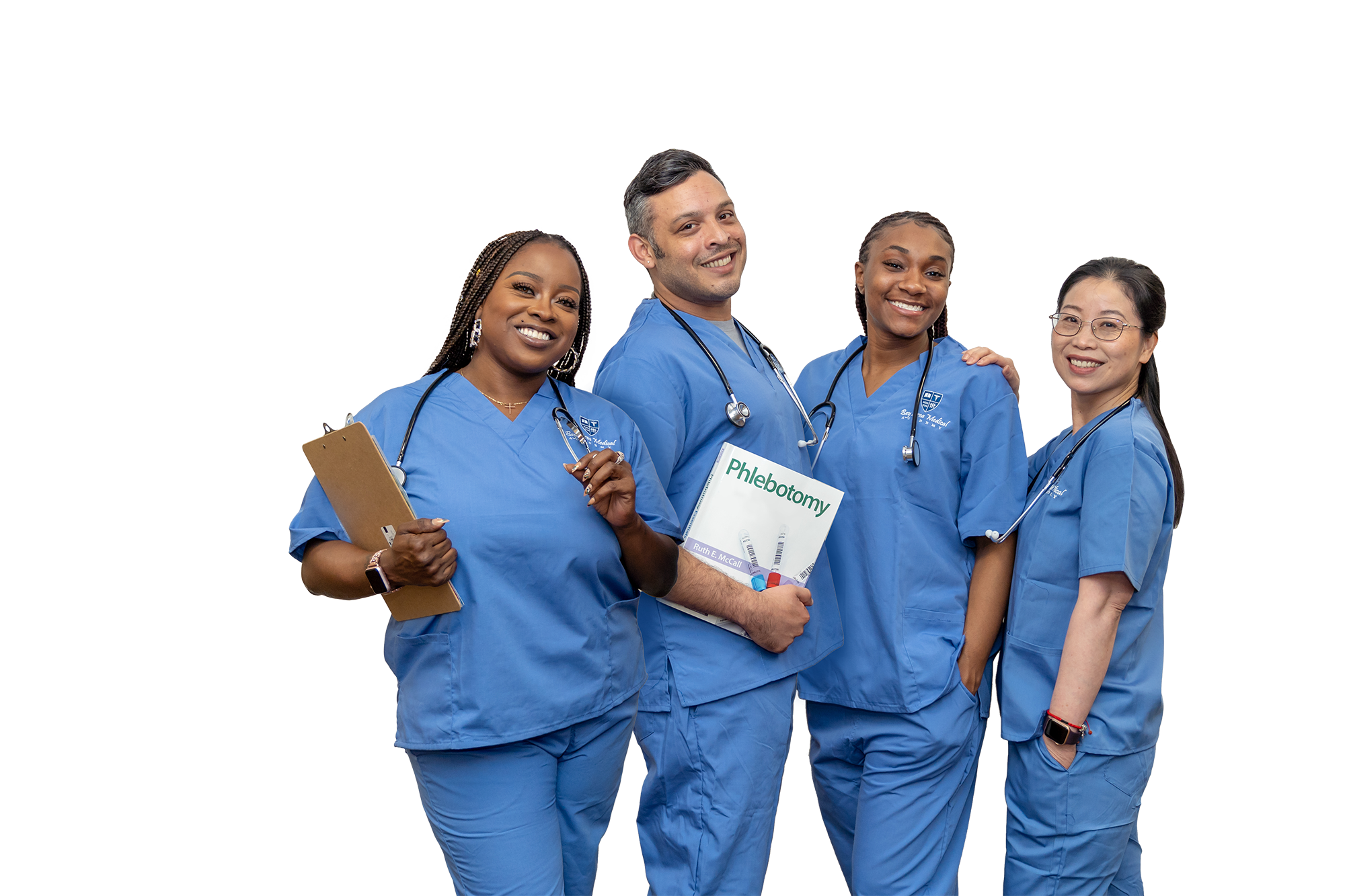
Our BAMA Heroes are our top medical assistant success stories. They represent a diverse group of people who bravely overcame difficulties to attend our programs and start their careers in healthcare. Whether they are busy parents, career changers, or new students who want to make a difference in the world, we love watching our students learn, grow, graduate, and then go on to become the frontline heroes of the healthcare field. Every graduate represents the very best our BAMA community has to offer. And each one brings so many unique skills, perspectives, and life experiences to our student body.
You can be one of them! Bay Area Medical Academy is committed to training the best medical assistants with our 3-in-1 Medical Assisting with Phlebotomy Program. With us, you’ll be equipped with three in-demand skills that you can use to enter the healthcare field with confidence.
Our accredited program exceeds California Medical Board Standards and most of our students qualify for financial aid. Some are even eligible for no-cost medical assistant training.
If you’re still not sure, take a look at the medical assistant success stories of just some of our BAMA Heroes. Chances are, you’ll find one or two that are a lot like you!

Champion and Breadwinner: How One Working Mom Reshaped Her Career
Meet BAMA Hero Jasmine Payne
Jasmine Payne’s daughter and son, Jay’lah and Ja’mel, will learn about heroes in school. They’re going to read about characters from history and literature who were faced with obstacles, which they overcame to succeed and thrive. What Jay’lah and Ja’mel might not realize yet, however, is that they already know a real hero who they see everyday at home: their mom. The word “hero” isn’t used lightly, either, because Jasmine’s journey includes overcoming heroic challenges. She was a foster youth, raising two children on her own as a single mother, she lost her job during the pandemic, cared for a family member suffering from health issues, and yet she still found the time to go back to school, and reshape her career. Here’s Jasmine’s story.
“I was born and raised in San Francisco,” says Jasmine Payne. From age 11 to 18, Jasmine was in foster care. She graduated from high school, and found a job she enjoyed at the Warming Hut, a tourist icon of San Francisco, at Crissy Field near the Golden Gate Bridge. She became a store manager, and was able to provide for her two kids. “I was getting paid well and didn’t want to leave.”
But the pandemic interrupted life. “With the pandemic, they had to let us all go,” Jasmine recalls. “I had no choice, and it was time to change it up. I was trying to get grounded and figure out what I wanted to do.”
Jasmine first found work as a personal care provider and Certified Nursing Assistant (CNA), which sparked her interest for a career in the medical field. She started researching schools that offered medical assisting programs, when she discovered Bay Area Medical Academy (BAMA).
“The staff at BAMA is awesome. I felt supported from the day I started,” Jasmine says of her school experience. The BAMA 3-in-1 Medical Assisting Program, which includes training in phlebotomy and electrocardiogram (EKG), can be completed in as little as nine months. “I don’t think I could have gone to school longer than that,” says Jasmine, whose time is also spent caring for her family. “I appreciated that.”
The BAMA financial aid office assisted Jasmine in searching for funding opportunities. She learned that as a foster youth, she actually was eligible for specific grants for school. “I knew there were grants available, by word of mouth,” says Jasmin. “When I did the financial aid screening, they asked questions about your past, like whether you were in foster care.”
Jasmine’s experience at BAMA included clinical work in-person, and online work. “I never thought in a million years I would take online school,” Jasmine recalls. She came to enjoy the online option, adding that, “I was still able to take care of my family.”
While she was studying in school and caring for her children, Jasmine was also helping her dad. Her father suffered a stroke unexpectedly, more than once. “I would find him in the same state each time,” Jasmine recalls the frightening moment she found her dad unresponsive. She performed CPR, a technique also taught at BAMA, and revived him. “Through the course of my studies, my dad had six strokes back to back.”
Such stress would be enough for plenty of people to push school aside, but Jasmine persisted. “I never missed one day, I was never late,” Jasmine exclaims.
Through her studies at BAMA, Jasmine even better understood her father’s medical condition. “We were learning about different parts of the brain and heart,” says Jasmine. “It was starting to look to me that what was happening was a seizure turning into a stroke.” With her help, her father recovered, and he lives down the street from her and his grandchildren. “He is wonderful. Walk, talk, eat on his own, almost like it never happened,” Jasmine laughs adding, “he also tells jokes.”
The Bay Area Medical Academy blended classroom and real world experience, even offering Jasmine the opportunity to work at a COVID vaccination center in the Mission District, in partnership with UCSF. She was placed in an externship program for clinical experience. BAMA’s career services office even helped Jasmine line-up several job fairs and career opportunities after graduation. Jasmine recalls, “I graduated from BAMA in May and I was hired in July.”
Planned Parenthood of San Francisco hired Jasmine full-time. There, she helps women and families, some of whom even travel from out-of-state for help. “My first client came from Alaska. I had a lady drive all the way from Arizona, she left at three in the morning. I have one woman who came all the way from Colorado,” Jasmine shares about her experience working at Planned Parenthood. “I’m very grateful we’re able to see them. It’s very meaningful. Whenever they leave, they always say ‘thank you, you saved me!’”
Jasmine explains how a BAMA education helped turn her career around. “I did this not only to better support my kids, but also to better care for my father. I have to be able to explain to them, ‘I do this for a living,’” says Jasmine. Perhaps inspired by their mom, Jay’lah and Ja’mel now speak about becoming an EMT or firefighter when it’s their turn to pick a career.
“Never give up,” Jasmine advises anyone thinking about pursuing their education. “No matter the situation, in due time you will complete it.”

Achieving a Dream: Cindy Mont’s Path to Pre-Med at UC San Diego
BAMA Hero
Imagining a different life or a better job, for many people, might seem beyond reach, or too difficult to attain. But for Cindy Mont, achieving a dream is possible, with strong determination and hard work. In some ways, Cindy had odds stacked against her: English is not her primary language, she’s a second-generation American of immigrant parents, she will be the first person in her family to graduate from college, and paying for school falls on her own shoulders. None of that, however, stopped Cindy from pushing through, and making new possibilities happen for herself and her family. She graduated from high school in 2021, and in only a short time, she has already completed community college, a full medical assisting program at Bay Area Medical Academy, and she even transferred as a pre-med student to UC San Diego. Here’s the story of how Cindy made her dream happen.
“I had known that I wanted to go into the medical field, but wasn’t sure exactly what I wanted to do,” says Cindy. “I was 17 when I found Bay Area Medical Academy, but I had to wait a year to apply, because you have to be 18 and have a high school diploma.”
Cindy’s parents are from Guatemala, and Spanish was the first language she spoke at home. “They’re both hard workers, and they instilled that value in me,” Cindy says of her mom, Dayra, and dad, Heiner. Cindy learned English at school, having taken English as a Second Language (ESL) courses since kindergarten.
“I’m Hispanic, many of my friends are also Hispanic. And we have the mindset that our parents came to this country and we’re not going to waste that opportunity,” Cindy says of her own work ethic and personal motivation. “A lot of my friends are also very hard working.”
“It was hard for me to navigate the school system, and I learned to be my own advocate,” Cindy recalls of her early education. “I did that throughout high school, and when I talked to the school counselors.”
While still only a sophomore, at Westmoor High School in Daly City, Cindy gained a headstart on college by concurrently enrolling in classes at Skyline community college in San Bruno. She strategized saving money on college in a clever way. “You could take as many college units as you wanted, but after a certain number you had to pay,” Cindy recalls. “So by staying under that number I had free college classes, and knocked those out.”
“When I turned 18 I already had my contacts at BAMA,” says Cindy about Bay Area Medical Academy. “I was ready to apply and go straight into the program, and I enrolled in the 3-in-1 program for Medical Assisting, Phlebotomy, and Electrocardiogram (EKG).”
Knowing that she would have to self-finance her university education, and wanting to pursue a career in medicine, BAMA seemed like a natural choice. This was an opportunity to get her foot in the door in the medical field, and also to get real-world experience in healthcare. BAMA has had a longstanding reputation for helping to place graduates in careers at some of the Bay Area’s best-known medical providers, including Kaiser, Stanford Health, Sutter, UCSF, Umoja Health, Unidos En Salud, and the Zuckerberg San Francisco General Hospital.
“I love being hands-on, not sitting behind a computer,” Cindy says about her decision to choose Bay Area Medical Academy. “I want to be a physician’s assistant or doctor, and in my research, I learned I needed some experience in the clinical field. People are only willing to hire someone with certifications. I needed experience and to start doing things in medicine, before transferring to university. So I decided I would go to BAMA.”
While enrolled in the nine-month Medical Assistant certification program at BAMA, Cindy worked part-time as a swim instructor, to help pay for school. Through the BAMA financial aid office, she researched additional funding opportunities and applied to every grant and scholarship that was available. Cindy won and was ultimately awarded the annual BAMA High School scholarship amounting to over $10,000.
“My instructor, Ms. Earby, I absolutely loved her,” Cindy recalls about her first day in class at BAMA. “She got one of the students who had been there a longer while to teach me the basics, like taking vitals, taking a patients’ history – and this was all on the first day. She went on to teach me the more difficult things, like how to take blood pressure manually with a stethoscope and sphygmomanometer.”
“Since I was in class during COVID-19, a lot of our class was run live on Zoom, but we would meet in-person on Tuesdays for our clinical days,” says Cindy. The pandemic presented a unique learning opportunity when students were asked to help provide COVID-19 testing and vaccines in San Francisco’s Mission District in February 2022, through a partnership with UCSF and Unidos en Salud. “I wanted to get my hands on something I was very interested in. Instead of labs on campus we would get our experience there, in the Mission, COVID-19 testing and administering vaccinations in the community.”
“I was able to communicate with the patients in Spanish. They expressed their gratitude that I was able to speak in Spanish,” Cindy says of her experience at the Mission testing center. “Especially knowing that the Mission area is predominantly Hispanic, I felt a need to be there. My family has been connected to that community.” Cindy’s work was even spotlighted in the newspaper, with a photo and caption in the San Francisco Chronicle.
Juggling work, family commitments, and two schools, Cindy finished her lower division undergraduate courses at Skyline, and graduated from Bay Area Medical Academy in August 2022. BAMA placed Cindy in an externship at Zuckerberg San Francisco General Hospital, and the BAMA career office connected her with job opportunities at employers like UCSF Medical Center and BayPLS, which provides services such as phlebotomy and community-focused COVID vaccine and testing clinics.
And what is Cindy Mont up to today? She transferred to the pre-med program at the University of California, San Diego, where she is on-track to graduate with the class of 2024.
“I am in the Bachelor of Science in Public Health program with a concentration in Medicine Sciences,” says Cindy, who now has many new opportunities for her career. “I enjoy the women’s health area, maternal or child health. I would like to be an OBGYN. I am thinking about going to medical school, it’s my top option, or Physician’s Assistant school.”
“I love it!” Cindy says about the change and adjustment moving from Northern California to San Diego. “I’m far from my family, but what helps me and gives me the confidence to be okay with being here, is that at home I was very independent and did a lot of things on my own. I feel okay with the distance. I know my parents are only a phone call away.”
“With the medical assisting training at BAMA, I saw for myself that I would not mind going into the field,” Cindy credits her experience at the Bay Area Medical Academy in helping her on her path. Cindy’s own advice to someone considering a program at BAMA is to have, “motivation, and stick to it.”

American Dream: From Retail Clerk to Stanford Lab Assistant
Meet BAMA Hero Xiaoli Liang, Lab Assistant at Stanford Health Care
Xiaoli Liang, who also goes by Shirley, weaves in laughter when she speaks about her experience at Bay Area Medical Academy (BAMA), a pursuit she says she almost gave up. English is not her first language, she grew up speaking Cantonese and Mandarin, and the prospect of learning medical jargon in English seemed to be especially daunting. She found herself starting over in her 40s, having lost her job during the pandemic as a clerk at a retail clothing shop. A new school and career in the medical field appealed to her, however, and she decided to take a chance, and learn an entirely new field in a difficult language, from scratch.
“With the pandemic, I was thinking about my career,” recalls Shirley, who worked several years at Brooks Brothers and Banana Republic in San Francisco, before being laid-off due to pandemic restrictions and the resulting downturn. “I didn’t want to just stay home and waste time. I wanted to learn something new. I remembered that when I was young, I wanted to join the medical field. My sister works in nursing, so I researched medical schools online, and I decided to call the Bay Area Medical Academy”
Shirley was encouraged by her daughter to call BAMA “My daughter said, ‘maybe you will like the medical field’ so I went ahead and enrolled. I wanted to give her an example and show her not to be afraid of a change and pursuing a completely new path.”
Shirley enrolled in BAMA’s 3-in-1 Medical Assisting Program, which includes training in phlebotomy and electrocardiogram (EKG). The program is intensive and thorough, and students learn a lot in nine to ten months. “At first when I started learning the program, it was really hard for me, because English is my second language,” recalls Shirley. “In the medical field, the terminology is so different, and it seemed very hard for me to learn. But I like to study and learn something new.“
“I almost wanted to give up,” Shirley exclaims. One of the staff members, who also speaks Cantonese, encouraged her to continue her studies. “They told me, ‘just don’t give up, maybe you will learn more in time.’ I received the support I needed and continued to study, until graduation.”
“It can be really hard studying when you are older. But the BAMA staff and teachers always were supportive,” Shirley says of her BAMA experience. “When I was upset or had difficulty, my daughter and my husband also supported me. Especially my daughter, who would help explain things. When something was very hard, she would want to support, and say, ‘don’t give up, just continue, and you will be a success.’”
In addition to her time in the classroom, Shirley also worked as a front desk assistant and COVID-19 screener at the school through the Federal Work-Study program, which she says had the added benefit of supplementing her studies. “I learned a lot, and I could practice English with the student community,” Shirley says of her work-study. “I learned about COVID-19 testing and precautions and was able to interact more with other students or instructors or TA and got to know more of them. The work-study was a good value to me.”
At the end of the program, Shirley did so well during her 200-hour externship at a small neurological practice in San Francisco that she was hired directly after completing. “I just ended up staying at the Dr’s office where I completed my clinical. They liked me and hired me on the spot. It was a great feeling!”, Shirley says as she blushes with timid pride. “They said they liked my MA skills and my professionalism, and I had developed that during the years I worked in retail. I worked there for little over a year and learned a lot. I appreciate that experience very much.”
Through the BAMA career office, and contacts she developed with the school top administrators, Shirley learned of several appealing job opportunities. “The director texted me one weekend and said, ‘The manager at the Chinatown Health Center is looking for someone who is fluent in Cantonese and I know you will be perfect for the position.’” Then, Renee and Shien at Career Services helped me apply for two more positions. Suddenly, I had two great job offers and I needed to decide if I wanted to work as a medical assistant for the City of San Francisco Public Health Department, or as a lab assistant for Stanford Health Care. I couldn’t believe it!”
“And what made me feel great was that they appreciated my language skills. They valued that I speak Cantonese and I also speak Mandarin. And now, my English is getting better!”
After a week of deliberating, Shirley decided to take the exciting opportunity at Stanford, one of the world’s preeminent medical research centers and regional healthcare providers. “I make twice as much as I did before in retail. And it’s very rewarding since I know my work helps the doctors diagnose the patients and I am helping people.”
So what’s it like working at Stanford? “Normally, I need to draw blood, perform phlebotomy, label and prepare the specimen and assist the laboratory with tests,” Shirley shares about her daily tasks. “You need to learn front desk duties, like checking patients in and out, contact with the doctors, go over doctors’ orders, and answer questions.”
“I am very thankful I got this opportunity. BAMA gave me a lot and I feel very grateful and humble,” says Shirely. She encourages anyone thinking about pursuing a new career path, “If you work hard, you will succeed!”

How to Launch a Career in Healthcare: Meet BAMA Hero, Federico Carvajal
Federico Carvajal is one of many graduates who launched his healthcare career with Bay Area Medical Academy’s 3-in-1 Medical Assisting with Phlebotomy Program. So, it was a pleasure to speak with Federico recently about his healthcare career so far, from coming to BAMA to working as a medical assistant at HealthRIGHT 360.
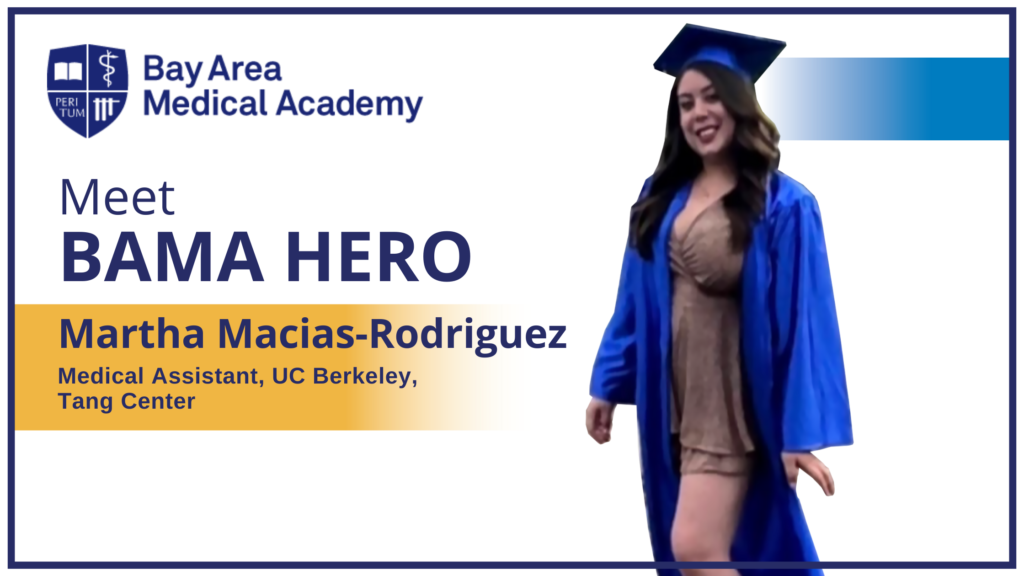
Why Become a Medical Assistant? BAMA Graduate and UC Berkeley Tang Center Medical Assistant Answers the Question with an Inspiring Speech
Martha Macias-Rodriguez is currently working for UC Berkeley as a medical assistant for primary care at the Tang Center (UCB). Martha graduated from the Bay Area Medical Academy and delivered the graduation speech for her cohort, during which she posed and answered “the million dollar question: Why become an MA?” We found her message to
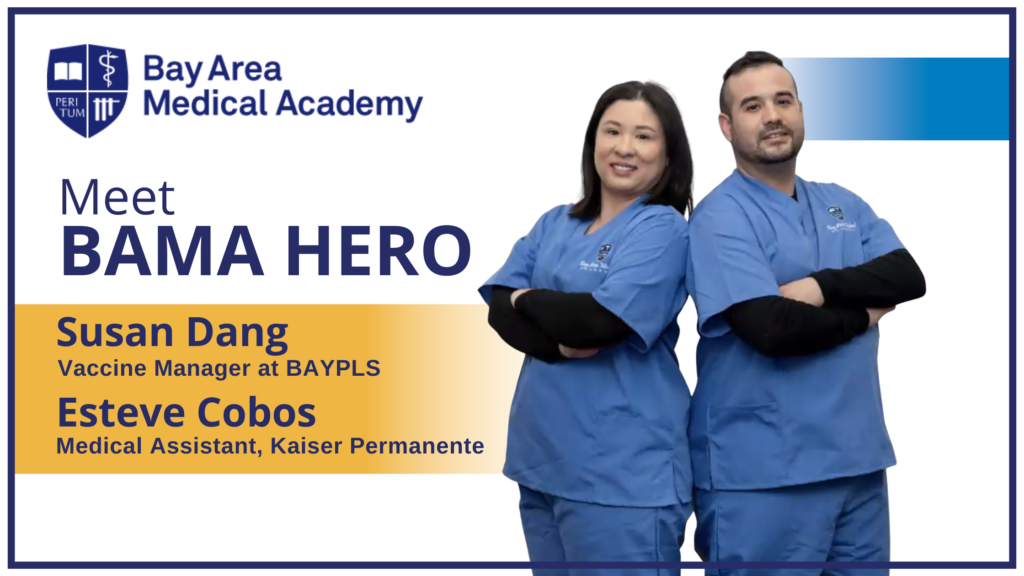
Learn How One Couple Launched Careers in Healthcare with BAMA’s Medical Assisting With Phlebotomy Program
This is the story of how Esteve Cobos and Susan Dang worked together to pursue their dreams of starting careers in healthcare. They accomplished this by attending Bay Area Medical Academy’s phlebotomy and medical assisting programs and ultimately found meaningful work as medical assistants in the Bay Area. Real Heroes’ Journey: Finding Each Other While

Meet BAMA Hero, Cheyanne Segura – A Pediatric Medical Assistant
BAMA and work2future together started my healthcare journey, and put me in the perfect position to do everything I want to do, and more. I could be a doctor if I wanted to! It gave me those opportunities to decide what I want to do. – Cheyanne Segura, Medical Assistant at Kj Kids Pediatrics, San

Becoming a Kaiser Permanente Medical Assistant – Tyana Watson
On August 27th, BAMA celebrated with the 2022 class of graduates and their families in Golden Gate Park in San Francisco. One of our graduates, Tyana Watson, delivered a graduation speech. Here is her speech in its entirety. Congratulations Class of 2022! “Good afternoon. staff, family, friends, and graduates. It is an honor to be
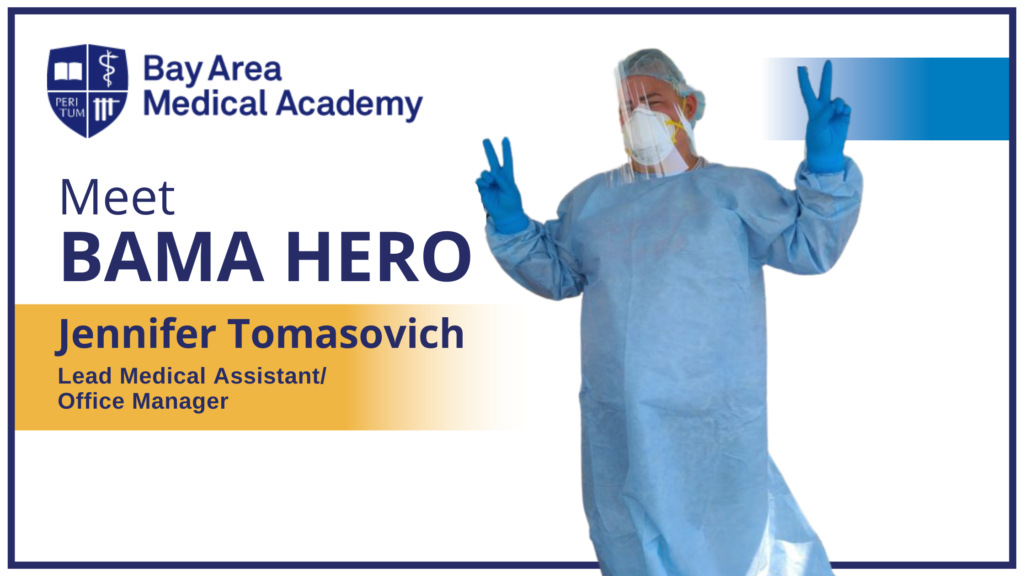
BAMA Heroes: Jennifer Tomasovitch, Medical Assistant with Phlebotomy Graduate
Jennifer Tomasovitch is a graduate of Bay Area Medical Academy’s Medical Assistant with Phlebotomy Program.
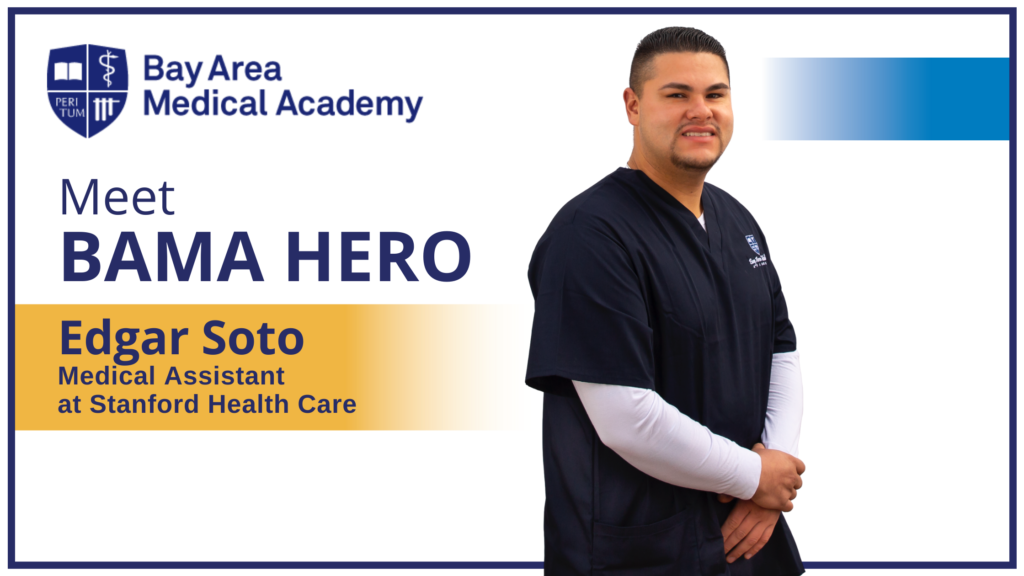
BAMA Heroes: Edgar Soto, Medical Assistant with Phlebotomy Graduate
Edgar Soto, a Bay Area Medical Academy Medical Assisting with Phlebotomy Program graduate, is one of many healthcare workers currently working dressed in a gown, goggles, mask, and gloves ensuring a patient’s COVID-19 testing experience runs smoothly and with as little stress as possible.

BAMA Heroes: Martin Valentines, Phlebotomy Technician Graduate
Meet the newest BAMA Hero, Martin Valentines. Martin graduated from BAMA Institute’s Phlebotomy Technician Course in January of this year. Now, Martin has an exciting career as a mobile phlebotomist where he enjoys bringing healthcare to people who are reluctant or unable to go into clinics.

BAMA Heroes: Joel Clark, Phlebotomy Technician Graduate
At Bay Area Medical Academy and BAMA Institute, we believe education helps transform lives—both for the individual and for their families and communities—which is why we’re delighted to introduce our new series, BAMA Heroes.
We proudly helped our BAMA Heroes write their own medical assistant success stories, and we’re here to help write yours, too. As you can see, our students come from a wide range of backgrounds with different experience levels. And some of their stories might sound a lot like yours. With successful, rewarding careers, they represent everything we here at BAMA stand for—and their stories matter. Let’s hear yours.
"*" indicates required fields
Curious about classes?
View our Class Calendar!
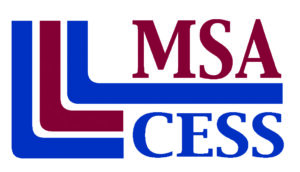


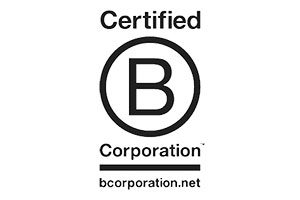


When you attend an accredited institution, you are attending a school that has undergone a rigorous process that evaluates educational quality. It’s not easy to become or remain an accredited institution. The rules and regulations are strict, precise and designed to protect students. Here are some of the benefits:
A reliable indicator of quality
Approved program of study
Qualified instructors
Recognition by employers nationwide
I liked the hands-on training best. The training in class was set up to give you the experience of working in a doctor’s office. You’re trained to take vitals and give injections, among other things.
Joan Garchitorena, Medical Assisting Graduate© 2024 Bay Area Medical Academy. All Rights Reserved. Website by WindsAndWater